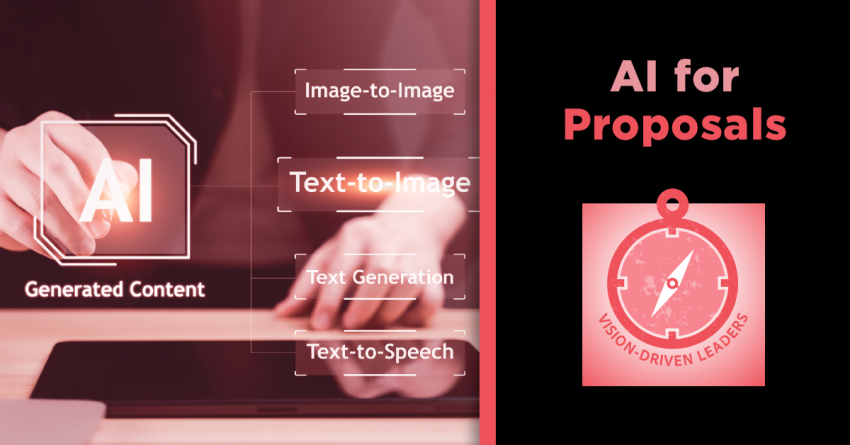Vision Driven Leaders: How to Use AI Effectively in Writing AEC Proposals
Artificial intelligence (AI) can serve as a powerful tool to streamline the process of writing AEC (Architecture, Engineering, and Construction) proposals. However, it is crucial to note that human input and expertise remain essential for compelling and persuasive work.
Here is a step-by-step guide on how to effectively utilize AI in writing and producing AEC proposals while maintaining clarity and accuracy:
1. Define the project scope: Start by thoroughly understanding the project requirements, objectives, and constraints. This includes gathering information about the client's needs, budget, timeline, and any specific guidelines or evaluation criteria. AI tools like DeepRFP and RFPIO can assist with RFP analysis and go/no-go decisions by providing valuable insights and recommendations through data-processing.
2. Collect and analyze data: Utilize AI tools to gather relevant data, such as previous project data, market trends, industry benchmarks, and case studies. AI-powered analytics can help identify patterns, insights, and best practices that can inform and strengthen your proposal. Platforms like Windsor.ai can save time in data collection and analysis.
3. Generate proposal templates: AI can be employed to create proposal templates that include standard sections such as an executive summary, project description, methodology, team qualifications, schedule, and budget. Textio and Better Proposals are AI-powered template generating tools that analyze past proposals to identify effective wording and structure, thereby improving future proposals.
4. Generate content: Leverage AI language models like ChatGPT or Writesonic to generate content for different sections of the proposal. By providing prompts or specific information about the project, these models can generate paragraphs or even entire sections of text. For instance, Copy.ai allows you to upload your firm's information then generates draft sections based on the provided prompts and the uploaded data.
5. Tailor the proposal: Customize the proposal by incorporating project-specific information and using client-centric language. While AI can provide a starting point, it is essential to personalize the content to address the client's specific needs, showcase your expertise, and demonstrate how your proposed solution aligns with their objectives.
6. Proofread and edit: AI-generated content may contain errors or require refinement. Conduct a thorough proofreading to correct any grammar, punctuation, or coherence issues. Review and refine the generated text to ensure clarity, consistency, and an appropriate tone. AI-powered grammar-checking tools like Grammarly and ProWritingAid can assist in this process.
7. Incorporate visuals: Visual aids such as diagrams, renderings, or infographics can enhance AEC proposals. AI tools like Venngage and Infogram can assist in creating these visuals based on project data or existing templates, improving the overall presentation and understanding of the proposal. If you are an avid Adobe user, check out Firefly, in Beta, to generate graphics using prompts.
8. Review and revise: Ensure that the proposal is comprehensive, persuasive, and addresses all client requirements. Review it from the client's perspective and make revisions as needed to strengthen the content, improve clarity, and maximize its overall impact. ChatGPT and other AI-enabled collaboration platforms can facilitate the review process by providing suggestions and feedback. Edit and scrutinize AI work the way you would the work of an apprentice.
9. Human touch: While AI can assist in content generation, it is crucial to incorporate your industry expertise, project-specific knowledge, and unique selling points. Ensure that the proposal showcases your team's capabilities, experience, and differentiators, as these human elements add value and credibility. Authenticity is crucial in all marketing work.
10. Finalize and deliver: Once you are satisfied with the proposal, organize it properly, format it consistently, and add a professional touch. Ensure that the proposal meets all the required submission guidelines and deliver it to the client within the specified deadline, utilizing AI-powered project management tools such as monday.com or Basecamp for efficient tracking and delivery.
Overall, remember that AI is a tool to augment human capabilities rather than replace them. Approach AI work as a machine-generated draft and not the finished product. It can only mimic you, your team, or your firm, and it needs some help obtaining the polish, passion, and authenticity of a human-generated proposal. Strive to strike a balance between utilizing AI's capabilities and leveraging your own insights and industry knowledge to create compelling and accurate AEC proposals.






